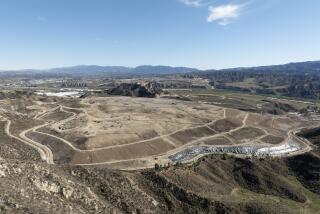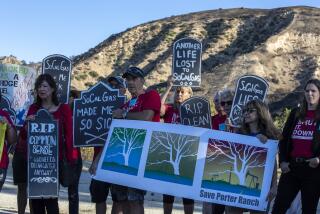Best McColl Dump Option: Closure
- Share via
As stated in an editorial (June 3), the time for action at the McColl Disposal Site in Fullerton is now. The endless studies and delays surrounding McColl must turn to decisive action designed to deal with waste at the site.
Last month, Fullerton community members living near McColl hosted a meeting to hear and discuss the Stabilization and Closure Plan proposed by the five oil companies that form the McColl Site Group.
MSG believes this plan would be the most protective of public health, the quickest to implement and the least disruptive to the community. Of all the alternatives the Environmental Protection Agency is considering, closure provides the highest level of protection at the lowest cost.
The 1990 Stabilization and Closure Plan proposed by MSG protects the public health and environment by avoiding the massive disturbance of wastes that thermal destruction engenders. The plan involves an emissions treatment system, reinforcement against earthquakes, waste stabilization and treatment, and drinking-water protection by means of a cover and underground walls.
The plan includes landscaping the site to provide a parklike setting and provides for long-term operation and maintenance activities. Closure is an alternative that has been used successfully elsewhere under similar conditions, and it meets all EPA, state and local regulations.
The sentiment of many people attending the May 24 community meeting was clear: The closure plan has merit and should be selected by the EPA. Above all, the community said, let’s stop delays, move forward and resolve the issue.
Our differences lie in the method of dealing with the waste: excavation and thermal destruction versus stabilization and closure. The EPA favors the former, MSG the latter. Excavation and thermal destruction could take 10 or more years to complete; stabilization and closure could take only 20 months, while being most protective of public health.
Excavating tons of waste and then placing a huge incinerator in the midst of a highly populated area in the nation’s worst air-pollution basin defies logic. Not only does excavation and thermal destruction pose a potential air-pollution problem, but it is the highest-cost alternative with the highest potential risk to public health, cleanup workers and the community. Closure, on the other hand, leaves the wastes mostly undisturbed and, therefore, results in little risk.
W.J. DUCHIE
Spokesman
McColl Site Group
More to Read
Sign up for Essential California
The most important California stories and recommendations in your inbox every morning.
You may occasionally receive promotional content from the Los Angeles Times.













